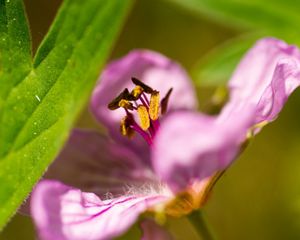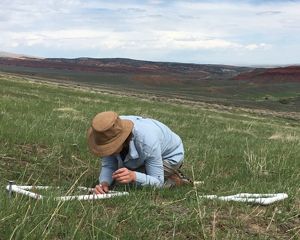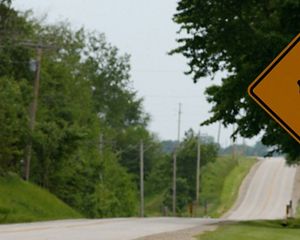
Wyoming Annual Report 2024
Read about our achievements over the past year—for nature and people.

Letter from the Director
What you do for Wyoming
When The Nature Conservancy’s Wyoming chapter was chartered in 1989, we were a small group of tenacious trustees and staff who wanted to protect as much wild and working land as possible through conservation easements. Fast forward to today: we have a robust, expanded and inspired board and staff working in communities across Wyoming with supporters like you. Together, we have protected more than one million acres of land and restored 1,500 river miles in partnerships with private landowners, local businesses, public land managers and industry leaders. This work protects wildlife, wildlands and the livelihoods of Wyomingites who rely on deep connections to this one-of-a-kind environment.
You make this possible through your support of The Nature Conservancy. I can’t thank you enough for the good you have done for Wyoming, all its inhabitants, and families like mine who love nothing more than to get out in nature.
Want to know where you are taking us next? By 2030, you will have:
- improved management of 3.5 million acres of connected and protected land in Wyoming—an area 1 ½ times the size of Yellowstone National Park.
- secured more than 1,000 river miles and more than 6,400 acres of lakes and wetlands so they can provide for our communities, food supply and wildlife.
- contributed to TNC’s global goal of reducing or avoiding three billion metric tons of greenhouse gas emissions each year—the equivalent of taking more than 650 million cars off the road—while supporting Wyoming’s energy economy and working in partnership with its leaders.
These are big, ambitious goals and they require action on a scale to match. In this report, you’ll get a glimpse of how you keep forested communities safer from severe wildfires, position coal communities to economically benefit from renewable energy and more. You’ll also meet some of the many faces here who are working behind the scenes to make sure your dollars make the most impact for people and nature in Wyoming.
Want to know more? Reach out anytime. We’d love to share about where we’re going, how we’ll get there—and how you are making it happen.
Hayley Mortimer, State Director
Where We Work
The Nature Conservancy works across Wyoming to ensure that people and nature thrive. Your support creates large-scale, lasting benefits for wild and working lands in the Greater Yellowstone Ecosystem, the Colorado River Basin, the Sagebrush Sea, Western dry forests and grasslands of the Great Plains.
Greater Yellowstone Ecosystem
Conserving connected lands and waters so Wyoming’s iconic wildlife can thrive

Wyoming’s forests may have evolved with wildfire, but the risk of catastrophic wildfire they now face is like nothing we have seen before. Hotter, drier conditions are driving more intense blazes. At the same time, people have inadvertently made our forests more fire-prone, all while more people are moving into forested communities at risk of wildfire.
“More than a century after people began suppressing virtually all wildfires, forests have a build-up of dead trees and brush, along with denser stands of young, less fire-resistant trees,” explains Carli Kierstead, Wyoming Forest Program director. As a result, fires that start small often intensify more quickly, climbing into the tree canopy and incinerating entire swaths of forest. Increasingly, they’re also claiming human lives and entire towns.
The work needed to reduce fire risk is straightforward but laborious. Fire crews typically clear small trees and brush before conducting controlled burns to further reduce the amount of flammable material. The real challenge lies in the sheer scale of the forests in need of these treatments.
Quote
Concentrating on areas where wildfire poses the most risk to human lives and communities, the team thinned brush and trees and planned for controlled burns.
Your support maintains TNC’s prescribed fire crews, putting them to work restoring forests to health and reducing the risk of wildfire to communities in Wyoming and beyond.
In national forests in Wyoming and other western states, there is simply too much fire-prone forest for the USDA Forest Service to treat. “This is why we focus our efforts on forested areas near communities—places where it means a lot if we can reduce wildfire risk,” Kierstead says.
This fall, for the first time in Wyoming, one of TNC’s national-level prescribed fire crews was deployed to the Bridger-Teton National Forest. Concentrating on areas where wildfire poses the most risk to human lives and communities, the team spent almost two months thinning brush and trees and planning for controlled burns. They focused their efforts around three towns near the Bridger-Teton National Forest: Alpine, Pinedale and Jackson.
Kierstead, who lives in Sheridan, first moved to Wyoming seven years ago for an internship with TNC while earning a master’s degree at Yale University. “I wanted to be in the Rockies because it enamored me as a kid, visiting Yellowstone and Grand Teton,” Kierstead says. Now, she is grateful she can help bring beneficial fire back to the region’s forests that are in desperate need of it. “If we could have gotten it done yesterday,” she says, “we should have.”
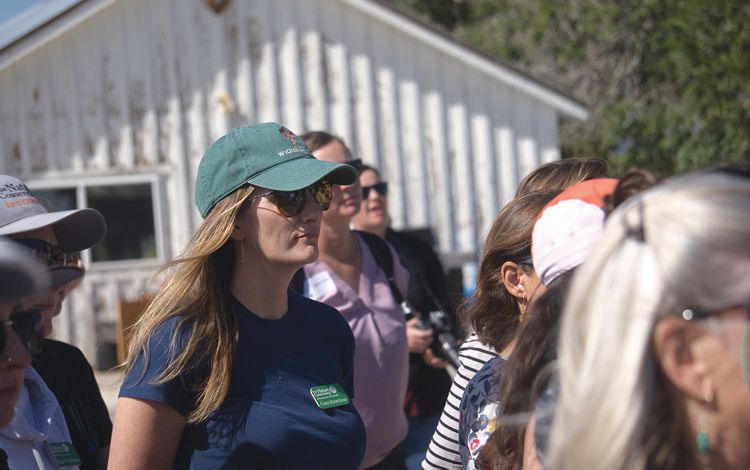
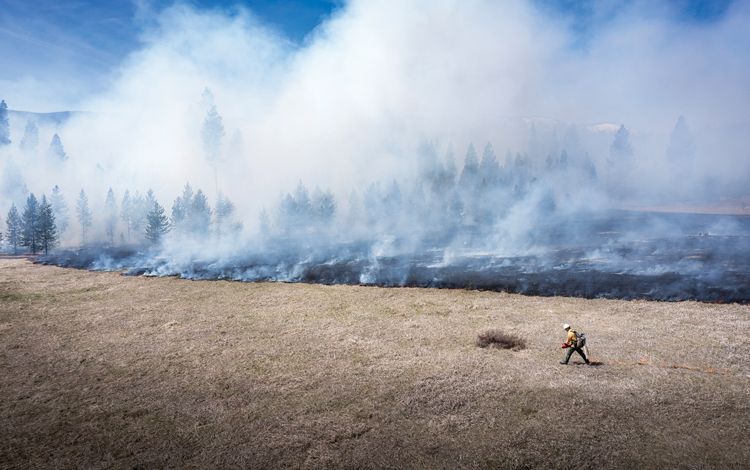
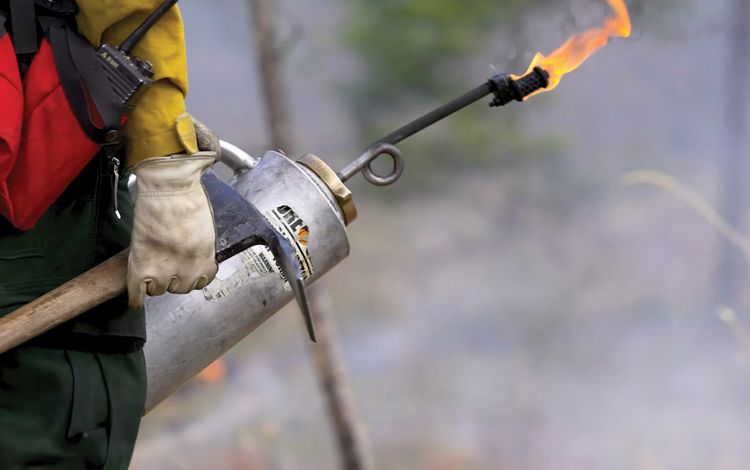
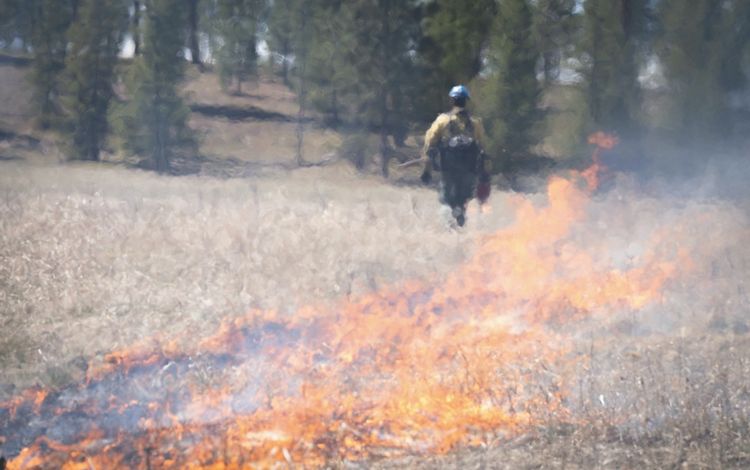
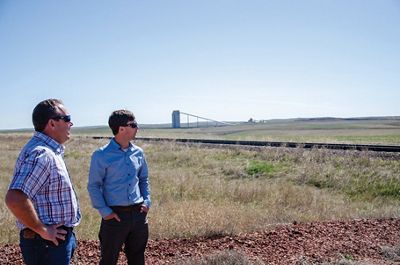
Waiting for coffee at a diner in Gillette, Justin Loyka knows that most of the customers around him are paying for their breakfast with money earned from coal jobs. Loyka has stopped by en route to a site visit of coal mines in the region, which is the epicenter of America’s coal production. Wyoming produces more coal than any other state in the nation. Thirty percent of America’s coal comes from Campbell County alone, and Gillette is its county seat.
“Energy communities in Wyoming have powered America’s economic prosperity for decades,” explains Loyka, TNC’s Wyoming Energy Program director. “They are also embedded in some of the most intact and important temperate ecosystems left on Earth. As the world shifts toward renewable energy to reduce carbon emissions and minimize the effects of climate change, we must also protect wildlife and habitat from poorly sited renewable energy development.”
Loyka is leading TNC’s charge to help the region’s declining coal mining operations repurpose their land and infrastructure for solar and wind energy production. The move will discourage renewable energy companies from building on pristine wildlands that may block migration routes for animals such as deer, pronghorn and elk. And most importantly for many in Gillette, it will provide an injection of jobs and financial investment in a town where few companies the size of the mining corporations would otherwise be enticed to set up operations. The promise of renewable energy also attracts new businesses, such as data centers, that need reliable access to large amounts of clean energy.
Part of Loyka’s work has been to establish Wyoming’s first data-rich map for renewable energy developers. The tool helps companies site new wind and solar farms away from wildlife corridors and toward mining lands where coal companies are shuttering operations and have infrastructure that can be repurposed instead of bulldozed.
For Loyka, helping Gillette prosper feels personal. He worked as a mining engineer for Peabody Energy in Gillette as his first job out of college. “It’s a great town with hard-working people who have the right skills to drive America’s renewable energy’s transition,” says Loyka. “They deserve not to be left behind.”
Learn More
about the coal community transition at nature.org/wycoalcommunities.
Your support keeps the Brightfields Energy Siting Initiative mapping tool current, providing city officials and state agencies with information and guidance on renewable energy siting, and supports policy change to encourage renewable energy investment in coal communities.
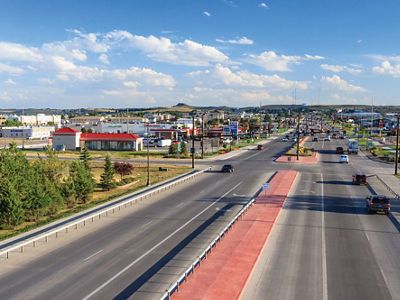
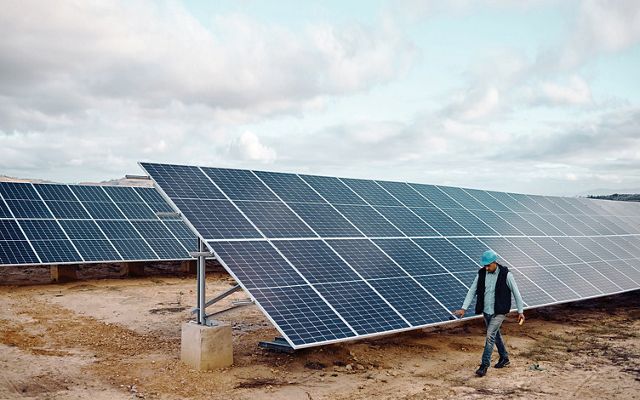
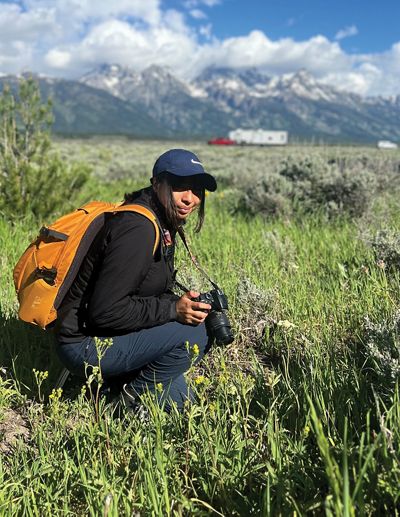
Mars Flores’ first day as a Wildflower Watch intern this past summer was anything but dull. “My first day in the field started off with sunny skies, blossoming flowers and a bear encounter,” Flores says. “How exciting is that? If that isn’t a great start, I don’t know what is.”
The Jackson High School senior, who was selected as a Coombs Outdoors Empower intern, was collecting field observations as part of an ongoing scientist-led research effort that tracks plant bloom times and berry abundance in Grand Teton National Park. Flores also helped run Wildflower Watch and Berry Blitz, two community science programs associated with the effort. The work reveals how the earlier arrival of spring, as well as hotter and drier conditions, are impacting which foods are available for bees, butterflies and other pollinators. The changes also affect larger species such as elk and bears that rely on flowering plants and berries for survival.
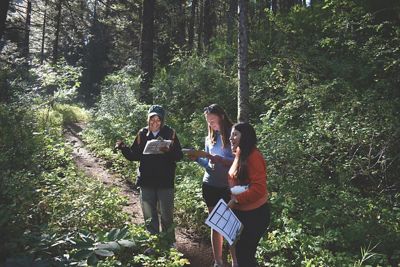
Flores has long been interested in science, math and art as school subjects. The internship allowed the Jackson resident to put these interests into practice, studying the natural cycle of plants near her home, learning how to analyze scientific data, and adding nature photography to her growing art portfolio. Her enthusiasm for native plants has also sparked conversations with friends and family. As a natural educator, Flores is raising awareness in the Jackson community about the importance of native plants and the threats to biodiversity in the Greater Yellowstone Ecosystem.
“This internship has revealed that this field of work feels like a natural fit for me,” says Flores.“ Leading a group during Berry Blitz brought out my enjoyment in educating others in topics I am passionate about, and I wish to pursue this passion in the future."
As habitat becomes more fragmented, few unique places still exist where migrating wildlife can pass undisturbed through pristine, connected lands. The Greater Yellowstone Ecosystem hosts some of America’s most extraordinary migrations, yet only a small fraction of the ecosystem is protected by the two national parks, Yellowstone and Grand Teton, at its core. The rest is a patchwork of private and public lands. With more people moving to the area and putting up fences, wildlife-friendly fencing ameliorates one of the biggest threats to nature in this precious region.
Quote
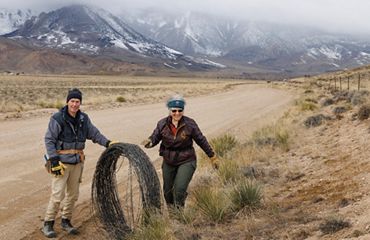
With more and more people moving to the area, one of the biggest threats to migrating wildlife is barbed-wire fences.
Learn More
In the Greater Yellowstone, TNC works with private landowners to remove or modify existing fences to make them safer for elk, moose and other wildlife to safely move through without getting entangled. We are also exploring innovative new solutions, such as virtual fencing, that can replace fences altogether in some situations by using special livestock collars equipped with cellular and GPS technology to keep cattle contained.
TNC donors are protecting this iconic region’s unparalleled wildlife so their migrations can continue to awe and inspire for generations to come.
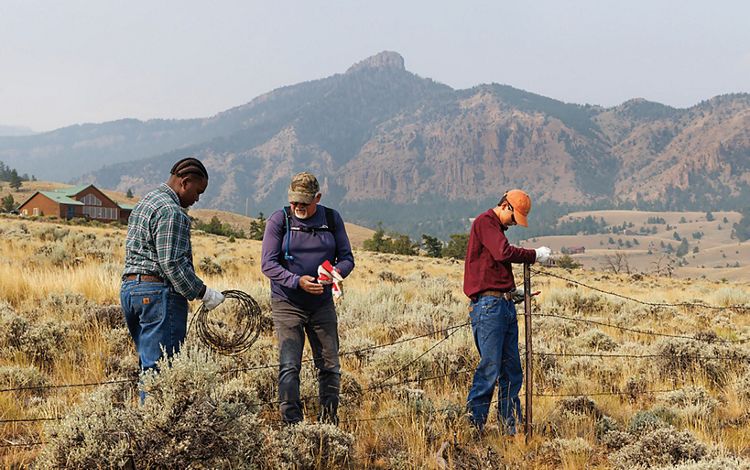
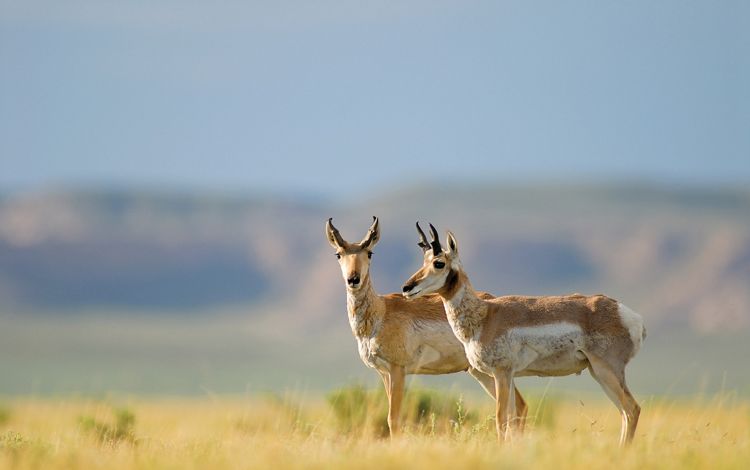
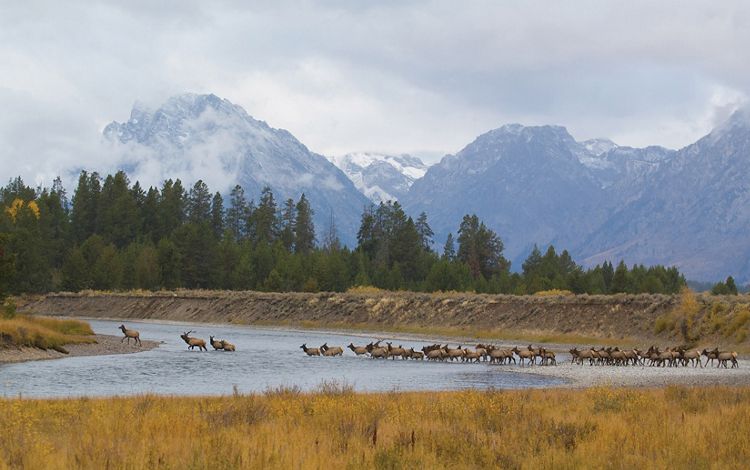
Sign Up for E-News
Get our latest conservation news and see how we’re protecting our natural world.

RESILIENT LANDS
Protecting Wyoming’s wild and working lands
As career public servants and Wyoming natural resource professionals, Larry and Roxanne Hicks know the importance of being accountable to the citizens of Wyoming. As landowners in Baggs, they feel similarly about protecting the land that supports Wyoming’s wildlife and ranching heritage. That’s why they partnered with TNC to place a conservation easement on their land.
Known as the H&C Easement, their property is now protected for a designated mule deer migration corridor and crucial range that serves both mule deer and pronghorn. It also hosts a highway underpass for migrating big game and a portion of Muddy Creek that contains threatened fish species.
“We are very pleased that this land is permanently protected,” says Larry. “It will always be part of a ranching operation and will permanently protect the mule deer migration corridor and the big game underpass under Hwy 789 on the property and forever serve as a crucial winter range for pronghorn antelope, mule deer and elk.”
Larry and Roxanne Hicks continue to steward their property as private landowners, but now we can all rest easy knowing that a conservation easement protects both the wild and working parts of this land now and into the future—thanks to TNC donors like you.

Donor Profile
Jessica Case: Doubling Her Impact for Wyoming
Former rancher Jessica Case believes that climbing to Heart Mountain’s summit changed the way she perceives her town of Cody. “I think everyone who lives here needs to get to the top of the mountain and look down to have a healthy perspective of where we live and how we live here,” she says.
The retired preschool teacher, now a Cody school board trustee, chooses to give annually to TNC in part because of how it manages Heart Mountain Ranch Preserve for people and nature. “I think that grazing is important when done right, and I appreciate that people should be able to use the land, if done wisely, to go out and enjoy nature.”
Case was pleased to hear her gift this year was doubled through TNC Wyoming’s Nancy-Carroll Draper matching challenge. “It feels good when you know your dollars will be doubled,” she says. “We all want to have the most impact that we can, so this is a great opportunity.”
Matching Gifts
Learn more about getting your gift matched at bit.ly/DraperMatch or by contacting Annalea Avery, associate director of development: 307-587-1655 or annalea.avery@tnc.org

Dollars & Sense
FINANCIALS
We put every dollar to use with care, accountability and transparency. Our strategic plan provides a clear road map to where donors like you achieve the greatest impact for nature and people. We manage our finances sustainably to ensure that your investment serves nature in Wyoming for generations to come.
| Assets/Liabilities | At June 30, 2024 | At June 30, 2023 |
|---|---|---|
| Cash and Investments | $12,219,609 | $9,779,127 |
| Endowment Funds | $20,083,254 | $19,638,933 |
| Land Assets | $176,939,861 | $177,630,369 |
| Other Assets | $806,241 | $858,380 |
| Total Assets | $210,048,965 | $207,906,809 |
| Liabilities | $2,900 | $2,000 |
| Net Assets | $210,046,065 | $207,904,809 |
| Total | $210,048,965 | $207,906,809 |
Revenue
FY 2023 Operating Revenue: $4,732,906Revenue
FY 2023 Operating Revenue: $4,732,906Contributions 67
Gov Grants/Contracts 6
Investment Income 23
Other Income 4
Operating Expenses
FY 2023 Operating Expenses $5,247,286
Support Nature
To learn more, to make a gift or to leave a legacy for Wyoming in your estate plan, please reach out to us at 307-332-2977 or wyoming@tnc.org.
Read Our Past Annual Reports
Thanks to you, we've been working across Wyoming to ensure that people and nature thrive. Read about our accomplishments over the years.







